15 parishioners (including 6 Ab Kettleby ringers), 14 school children, and 6 other special guests toured the John Taylor & Co Bell foundry in Loughborough today, all leading up to witnessing the casting of our two new bells.
Our tour guide for the day was George Dawson, who has a wealth of knowledge and experience for anything you could possible want to know about bells - ringing, making, maintenance, etc. George's website can be found at http://georgedawson.homestead.com/.
George met us all in the Taylor's Museum and took us through to the bell room just behind the museum. The room hosts a collection of bells from various different founders. The children were invited to take a hammer and strike each of the bells in turn. The differences in sound were explained and the concept of bell tuning was introduced. Taylor's had discovered that a bell has 5 notes made by different parts of the bell. Each part of the bell can then be tuned individually to provide the correct harmonic.
From the museum we went over the road to the workshops, where our new/old tenor (see previous article 'Augmentation Progress') was waiting for us, prompting much discussion and excitement!
A walk through the workshops to the woodshop and we were given an explanation of the different woods used in a bell tower - oak for the wheel spokes, ash for the wheel's soulplate and shroud because of its flexibility. Ash is also used for the bell stays.
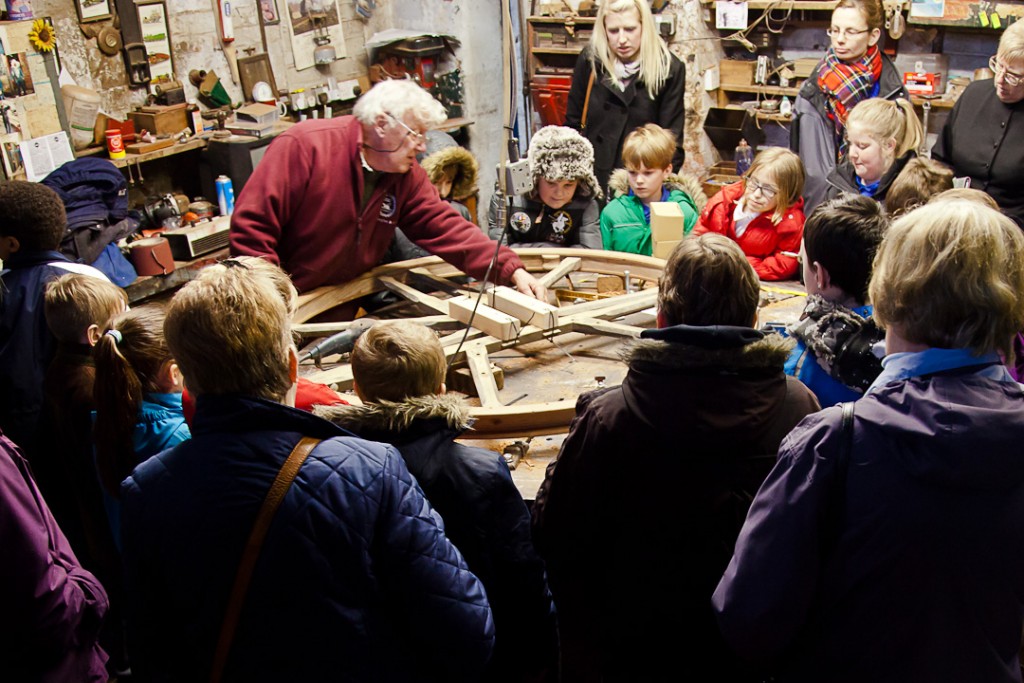
From there through to the rope-shop where Paul makes new bell ropes from hemp, polyester and wool. He explained that polyester is used for the upper part of the rope as it isn't handled. The tail end is hemp which is much softer on the hands than polyester would be. Sallies are made from wool - which surprised a couple of our ringers. (Quite what they thought it was made of is somewhat baffling!)
On our way to the tuning shop, we stopped at a bell rigged up in the workshop for ringing, albeit without a rope. George demonstrated the mechanics of a bell being rung up, rung full-circle and then rung down again. A difficult thing to explain to people without being in the bell chamber when it's happening, so to have a rig that can people can easily see really helps to explain the mechanics.
Inside the tuning shop we saw the giant lathes used for turning and filing the bells in order to create a correctly tuned bell. George demonstrated the sound properties of different bell materials, which clearly explained why bells are made from copper and tin!
On the way back through the workshop, we arranged for our new/old tenor bell to be hoisted up into the air for a fantastic photo opportunity!
By now it was nearly time for the casting, so we all made our way back to the museum and up the spiral stairs to the foundry viewing gallery. There was a slight smokey haze, and a strong smell of hot metal - as you might well expect from a metal foundry, with furnaces melting metal ready for casting! The temperature of the metal was checked, and a bright stream of molten metal was poured out of the furnace into the waiting crucible.
This was hoisted up and the dross floating on the top of the molten metal skimmed off onto the floor. At this point, Rev Sue said a few words and blessed the casting of the new bells; accompanied by some singing!
The crucible was then turned and the molten metal carefully poured into the waiting bell moulds! First the new treble
And then the new number 2
Two new bells were born!
Once the area had been made safe, we were invited down from the gallery to have a closer look at the bells and the casting, and to ask some questions of the bell founders themselves.
Finally, we had booked the foundry tower for some ringing after the casting, so those that could ring, and those interested in watching made our way to the foundry tower. It's a very light set of bells, so our inexperienced ringers were given the opportunity to try it out on their own first, before joining in with some rounds.
All in all a fantastic afternoon - a very interesting tour cumulating in the casting of the two new bells for Ab Kettleby. Two bells that will outlive all of those who witnessed it and should last for several centuries.

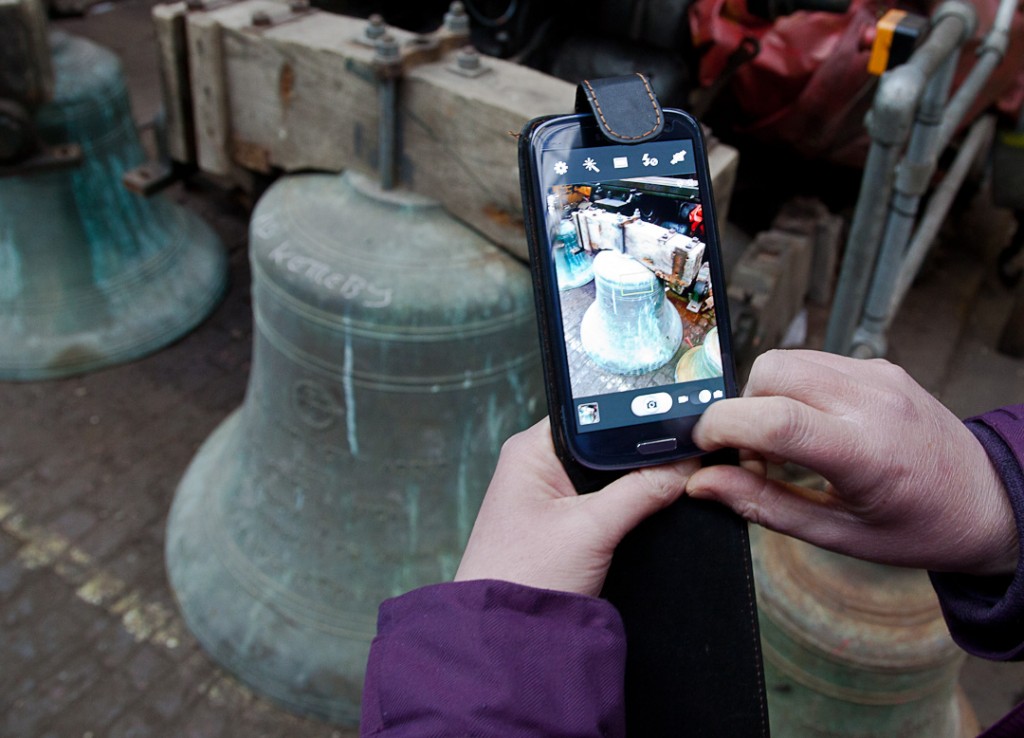
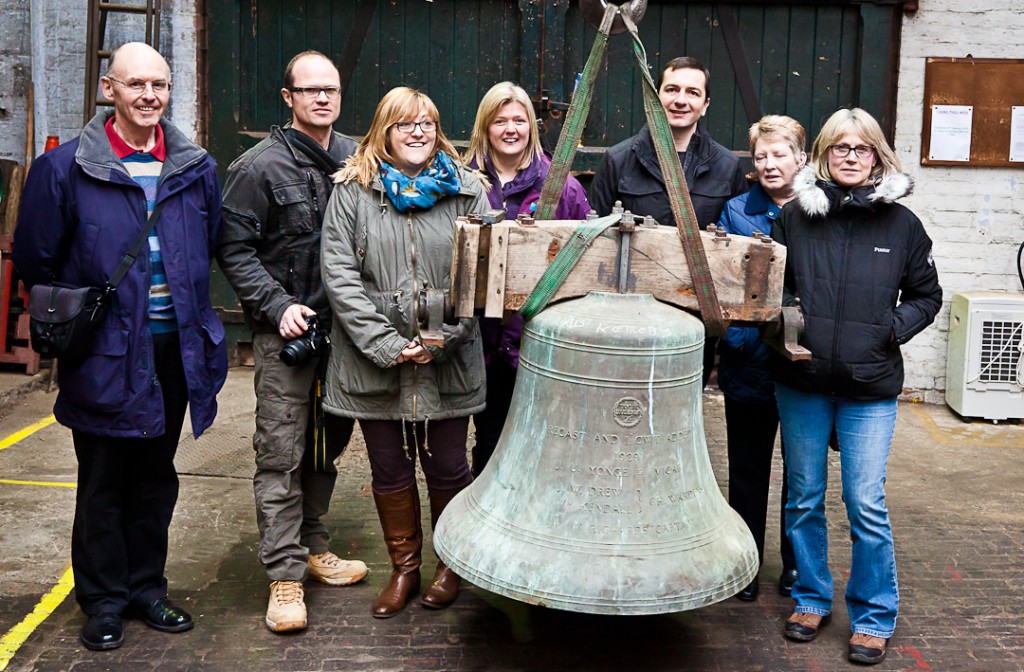
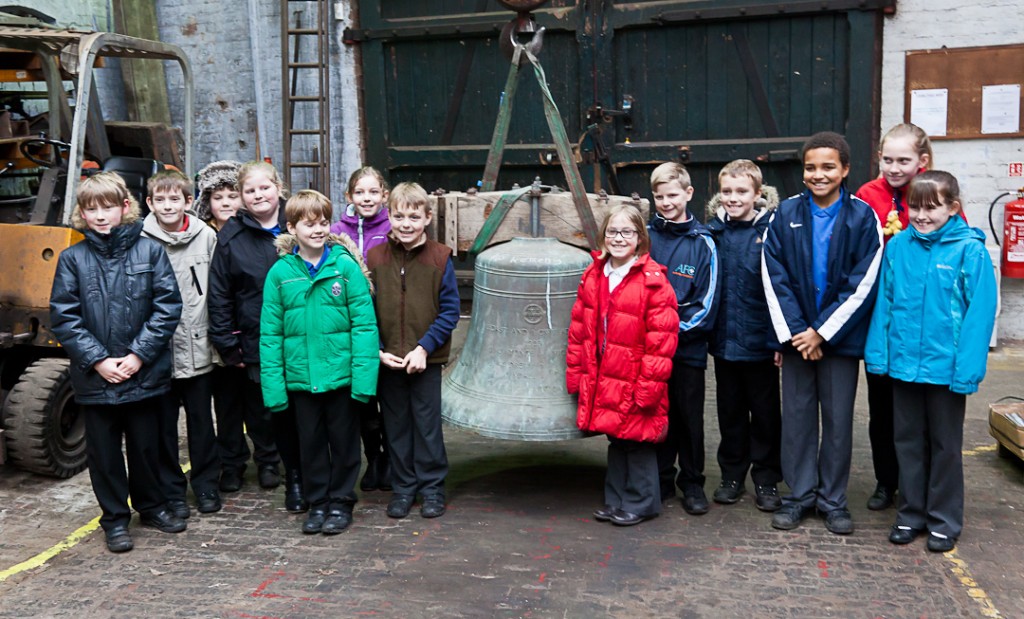

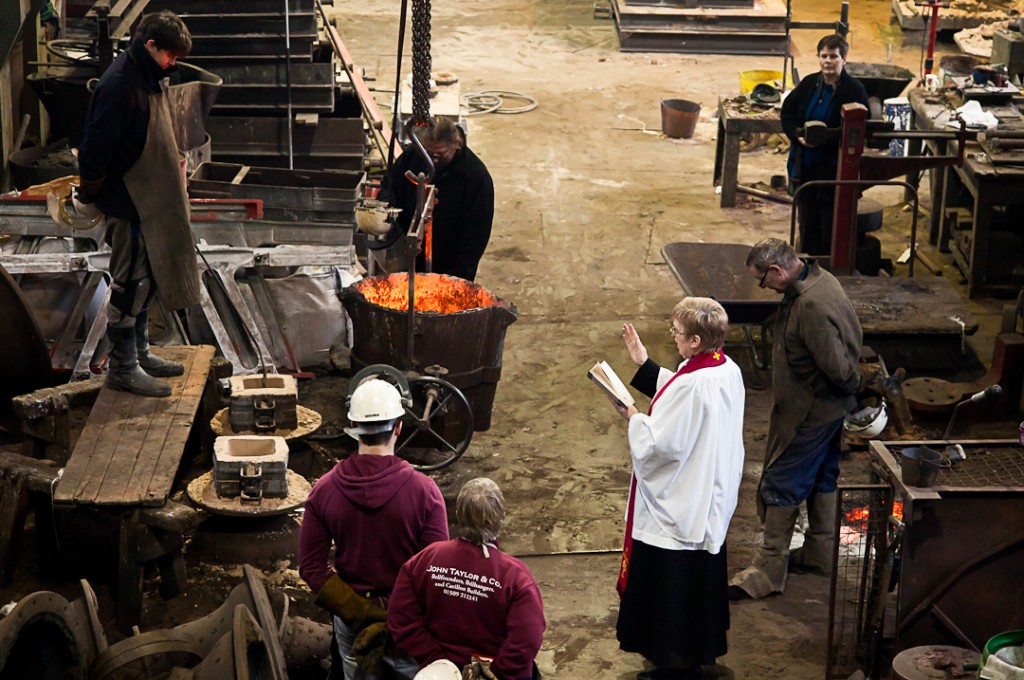
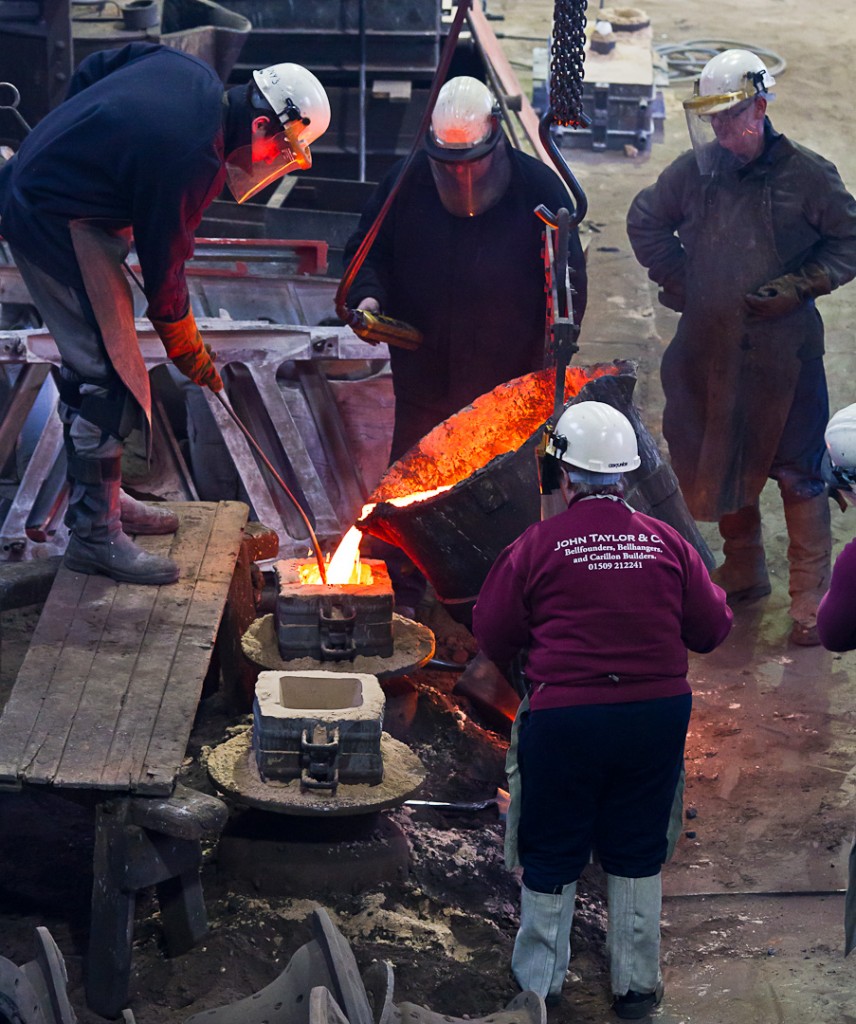




We’ve been to the Bell place before, amazing to know you have new bells at Ab Kettleby. We live in Asfordby Valley, may even hear them one day 🙂 Have you any idea when the bells will be hung in the tower? Would love to be able to watch the process
Hi Nina, thank you very much for your comment! Following the casting, the bells need some more work and preparation in the foundry before they can be shipped out to us. Those processes take time so we’re not expecting them to arrive until around Easter. Hopefully we can get them up in the tower shortly afterwards.
At the moment, there are no firm dates for the bell-hanging to be carried out. As soon as we know anything more, it will be published here, and on Twitter and Facebook, so please do keep checking back.
If you’d like to come and see the bell-ringers in action, you would be more than welcome to join us on a Wednesday evening from 19:30.